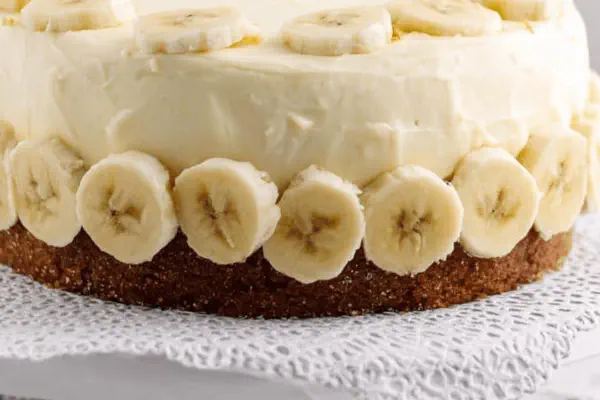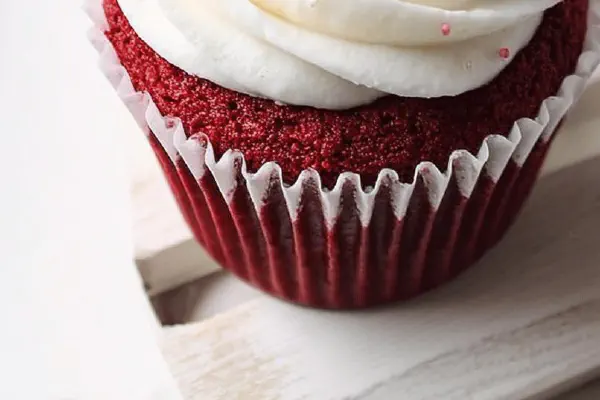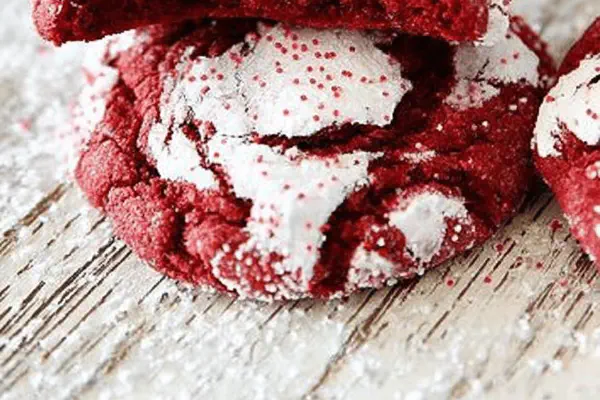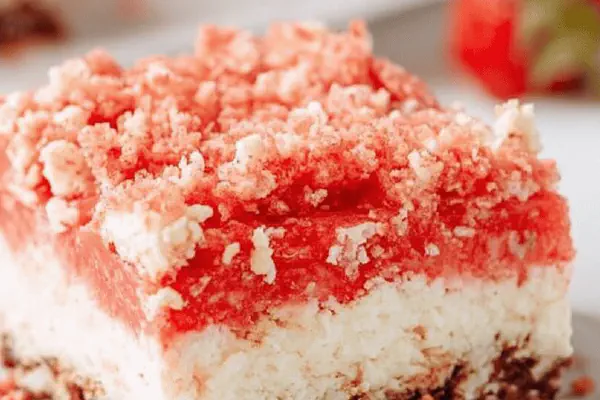Banana Cake Twist

By Emma
Certified Culinary Professional
Ingredients
- 2 teaspoons ground nutmeg
- 1 teaspoon baking soda
- 1 tablespoon baking powder
- ¾ teaspoon salt
- 2 ½ cups all-purpose flour
- ½ cup softened butter
- 1 cup granulated sugar
- ½ cup brown sugar
- 2 large eggs
- 1 tablespoon vanilla extract
- 1 cup buttermilk
- ½ cup plain whole milk yogurt
- 1 cup mashed very ripe bananas (about 3 medium)
- 1 cup vegetable oil
For frosting === 8 oz softened cream cheese
- ½ cup softened butter
- 1 teaspoon vanilla extract
- 3 cups powdered sugar
- 2 tablespoons heavy cream
- zest of 1 lemon
For decoration === 1 banana sliced
- 1 tablespoon lemon juice
- 1 tablespoon pure maple syrup
About the ingredients
Method
Cake Instructions
- Heat oven to 345°F; a little lower than usual to avoid over-browning. Prepare two 9-inch pans: parchment paper in bottom, spray sides lightly with non-stick spray.
- In a bowl, sift together nutmeg, baking soda, baking powder, salt, and flour. Measure carefully; too much flour kills fluffiness.
- Whisk sugars, butter, and vegetable oil until mixture light but not too aerated. Oil keeps crumb moist; butter alone is risky here.
- Add eggs one at a time. Don’t dump all at once—each blends better and keeps batter stable. Stir vanilla extract in now.
- Alternate adding dry flour mixture and buttermilk-yogurt combo, starting and ending with dry. Use folding motion, don’t overmix. Batter should feel soft, a little sticky.
- Stir in mashed bananas last. Overmix and bananas sink, giving dense pockets.
- Divide batter evenly into pans. Smooth tops. Listen for slight slap sound when batter moves—good indicator of consistency.
- Bake 38 to 45 minutes. Toothpick poke is king; if moist crumbs stick, give 5 more but watch closely. Top should feel firm but springy, color golden with slight cracking edges.
- Cool 20 minutes in pan to loosen from edges. Run knife gently around sides before flipping onto rack. Wait until totally cool before frosting or cake will slide and crumble.
Frosting Instructions
- Beat cream cheese and butter until fully combined, silky but still thick.
- Add vanilla and lemon zest. The zest cuts rich cream cheese sweetness, adds brightness.
- Gradually add powdered sugar—slow! Storm of powdered sugar clouds mess up kitchen if rushed. Beat until thick but scoopable.
- Drizzle heavy cream while beating to lighten the texture; stop at soft peaks. Want fluffy but still steady enough to hold shape.
Assembly Instructions
- Trim rounded tops with serrated knife for even stacking. Uneven cake layers are basic rookie mistake.
- Place first layer top side up on platter. It’s more stable that way.
- Spread about ½ cup frosting evenly to edges. Thick enough to stick, thin enough not to slide off.
- Flip second layer top side down onto frosting. Press gently, not squashing layer, to glue with filling.
- Frost top and sides. Use offset spatula, scrap edges periodically. Frosting will catch crumbs if cake isn’t perfectly cooled or trimmed.
- Dip banana slices in lemon juice-maple syrup mix for 5 minutes, drain on paper towel. Prevents ugly browning and adds a touch of shine and sweetness.
- Decorate cake top with slices in circle or pattern. Freeze for 20 minutes to firm frosting before cutting, reduces smush in slices.
- Keep refrigerated if not serving soon. Takes on flavors overnight but bring to room temp before slicing for best flavor and moist texture.
Cooking tips
Chef's notes
- 💡 Swap butter for oil to keep crumb moist but watch batter texture; oil alone can lose richness so softened butter blends better. Use fresh baking soda and powder. Old leaveners kill lift. Measure flour by weight or spoon into cup lightly to avoid dense results. Folding dry and wet mix gently keeps crumb tender; overmix toughens. Use slow drizzle for buttermilk-yogurt combo for tang balance. Add eggs one by one to keep batter stable, prevents collapse. Mash bananas fully but fold gently. Chunks cause weird dense pockets. Keep bananas ripe but not mushy or drain liquid.
- 💡 Baking temp lowered slightly to 345°F avoids burnt outer crust while center cooks fully. Watch golden edges and gentle cracking for doneness, poke test confirms. Toothpick moist crumbs stick okay but no wet batter. Bake 38-45 min usually but watch closely last 5. Cool 20 min in pan to loosen sides from pan steam. Running knife around sides stops wet bottom and tearing. Flip to rack when semi-warm; frosting on warm cake slides off and crumbs mix in. Patience cooling is key, no rushing. Store baking pans with parchment plus non-stick spray; helps release without sticky mess from oil-rich batter.
- 💡 Frosting chill steps matter. Beat cream cheese and butter to silky thick but not too soft or runny. Add lemon zest early to cut richness. Powdered sugar added slowly or you get airborne sugar storms. Beat to scoopable thick—too thin and frosting slides. Drizzle heavy cream bit by bit to lighten texture, stop at soft peaks. Chill frosting overnight if possible to marry flavors and firm up for slicing. Banana slices soak in lemon juice and maple syrup mix for anti-browning and shine. Don't skip quick soak; fresh bananas blacken fast on exposed surfaces. Drain slices well to avoid soggy topping. Freeze decorated cake 20 min for clean slices.
- 💡 Layer stacking requires trimmed tops with serrated knife; uneven layers slide or crumble. Place first layer top up for stability. Spread frosting thick enough to hold but not slide off edges. Flip second layer top down for neat seal and minimize air gaps. Frost top and sides evenly with offset spatula, scrap edges if crumbs mix in—crumb coat here can help if crumbly cake. Refrigerate assembled cake if not serving soon; flavors meld and keep frosting firm but bring to room temp before slicing to unlock aromatics and soften crumb for eating. Use parchment and spray combo in pans for best release, especially with oil batter.
- 💡 Mix dry ingredients sifted together for even rise; lumps kill texture. Too much flour kills light crumb. Use nutmeg over cinnamon for subtler warm spice but switch if you want stronger aroma. Buttermilk alone tang not sharp enough, yogurt adds creaminess and deeper flavor punch. Watch batter consistency; sticky but soft is right. Thinner batter loses structure, stiff toughens crumb. Listen to batter slap sounds when smoothing top—dry lat sound means heavy flour, adjust next time. Cool completely before frosting or cake crumbles on knife. Bake time tweaks based on oven; visual and tactile cues over timers. Baking is sensory more than stopwatch.
Common questions
Why vegetable oil instead of butter?
Oil keeps cake crumb moist, butter dries out easily. Butter adds flavor but can harden crumb. Oil blends better with sugars and wet mix. Use softened butter with oil for balance if you want some richness without dryness.
How to prevent banana slices browning?
Quick soak in lemon juice and maple syrup mix helps slow oxidation. Drain them well after. Skip soak and bananas blacken fast. Maple adds subtle flavor and shine. Could use just lemon juice but syrup adds texture and sweetness. Timing critical—don’t soak too long or slices get soggy.
What if cake is dry or crumbly?
Check flour measuring first. Too much flour stiffens batter and dries results. Overmixing develops gluten giving toughness. Baking time too long dries cake. Underbaking dense. Cooling method counts—remove from pan soon after baking to avoid soggy bottom steam. Oil helps moistness but needs balance with butter and wet ingredients.
Storage advice for assembled cake?
Refrigerate if not immediate serving; frosting firm and flavors meld overnight. Bring to room temp before slicing for best aroma and moist mouthfeel. Cake can also freeze wrapped well; thaw slow in fridge. Leftover slices kept in airtight box prefer fridge, not shelf, due to moist banana and dairy layers.



